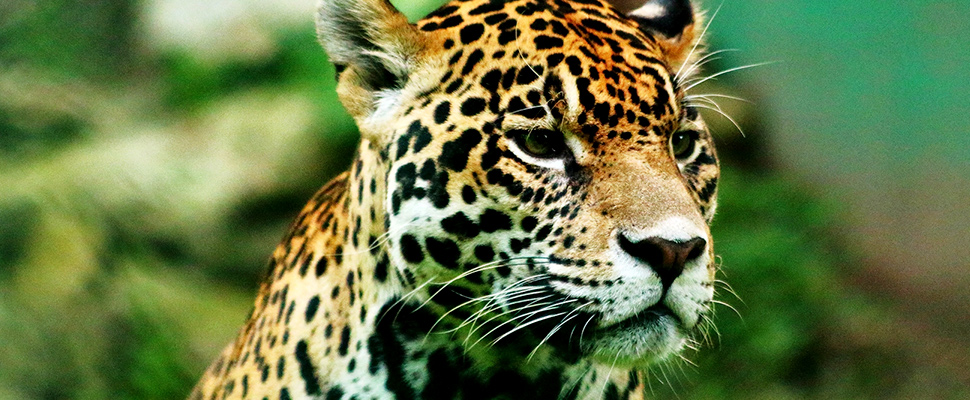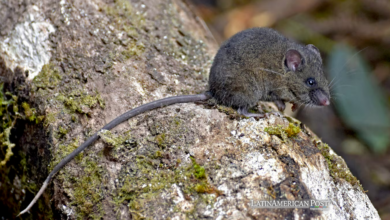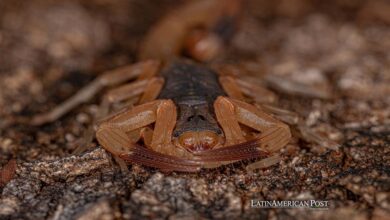Jupiter the lion isn’t the only Colombian animal in danger
The serious health situation of Jupiter, an African lion victim of the negligence of environmental authorities in Colombia, is controversial.

In addition to the case of Jupiter, the lion of Colombia, other species are also in danger. / Photo: Courtesy
LatinAmerican Post | Alberto Castaño Camacho
Escucha este artículo
Leer en español: No sólo el León Júpiter está en peligro de muerte
Great stir in social networks and in national and international media was caused in recent days by the serious health situation of Jupiter, an African lion raised in captivity and victim of the negligence of some environmental authorities in Colombia.
Immense resources and media deployments were dedicated for days to Jupiter and his caregiver Ana Julia Torres, however, some questions about it have arrived to the editorial team of LatinAmerican Post. One of them is: “Why do people care so much an African lion, but nobody cares about the species that are part of the native biodiversity of Colombia? ” A great question for countless answers.
Perhaps the most condescending could be the link created between Ana Julia and the lion. Others might think that the evidence of the negligence and indolence with which environmental authorities acted at the time, such as DAGMA and CVS, helped to stimulate the public outrage. However, there are few who assign it to simple social network snobbery, a cascading effect of ephemeral solidarity. The truth is that in Colombia there are six of the ten species of cats in South America and many of us could easily ignore this fact.
The biologist Gina Paola Gómez-Junco MSc is a researcher of the ProCAT organization, an international organization dedicated to the development of research and conservation strategies and in dialogue with LatinAmerican Post explained that “in Colombia, there are six types of wild cats, Panthera onca or Jaguar, Puma concolor which is the Puma or Mountain Lion, those are the two big cats of America. But we also have medium size cats, in order of their size we find the Leopardus pardalis, better known as Ocelot, the Leopardus wiedii, Tigrillo, then the Herpailurus yagouaroundi which in many regions is known as the Wildcat or Brown Cat and finally the smallest of all felines that live in Colombia is the Oncilla whose scientific name is Leopardus tigrinus ”.
It is paradoxical that we are so interested in a specimen of a foreign species, as is the case of Panthera leo or African lion, like Jupiter, but we do not know the problems that our own wild cats have.
You may be interested: The lion that agonizes while Colombia tries to save him
The loss of cat populations in Colombia is truly worrying and is currently increasing, “there are several causes, but I would like to highlight two in particular, which I reiterate, are not the only ones. The first is the destruction of the natural habitat of these wild animals to turn the forests into pastures for livestock or destinies for industrial monocultures or timber crops, the second one is the indiscriminate and commercial hunting of the natural prey of these predators. ”
The biologist says that “as a result of these two factors, felines have to move to get their livelihood and often encounter human settlements where they find easy prey such as sheep, cows, and even chickens, guinea pigs, rabbits, and any poultry "
This is when the problems of these feline predators increases, because “this generates what we know as ' Retaliation Hunting' when producers hunt wild cats as a preventative measure to protect their livestock, however, people do not realize that there is not a single feline, there may be several in the region or even other predators such as foxes, opossums, weasels, etc. With the death of a feline they do not stop the attacks, then they continue killing and killing predators until there are none left in the area and that is when the most serious problems of ecosystem imbalance come ”.
Gómez-Junco explains that “biodiversity provides us with a very large amount of benefits known as 'environmental services', pure air, clean water, fertile lands, forest products such as fibers, medicines, food, etc. But biodiversity is like a brick wall and each species is a brick, if we start to subtract one of them and then one more and the chain continues, the wall will weaken, it and will end up falling.” This means in the words of the ProCAT researcher that "we are trying to solve a problem that we created by taking some actions that will generate a much bigger problem."
Read also: Eco-friendly biodiesel from palm oil?
In Colombia there are laws that protect wildlife, but one thing is that the rule exists and another that the authorities are able to apply it. “This lack of enforcement of the rules means that the communities do not take them very seriously. Then one wonders: what are Colombians giving importance to, a single specimen of African lion or hundreds of felines of our native fauna? Worrying about hippos and lions is very good in the sense that people mobilize in the face of negative situations that happen to animals, the problem is that all these movements occur with species that are exotic, not ours".
And the biologist adds that “The case of hippos is emblematic, it is a species that generates very serious problems at the ecosystem level and that when solutions such as population control are proposed, people do not understand why and animal movements are generated so that this type of control is not exercised. We are not saying that the life of an animal is worth more than another, but at the ecosystem level it is important to protect native species rather than exotic ones. What I want to highlight is that just as people are able to organize and raise their voices for exotic species, some invasive, we should also have the ability to raise our voices three and four times louder for native animals that are dying daily in rural areas and that without any control are being hunted and marketed before the indolent eyes of the authorities ”.





